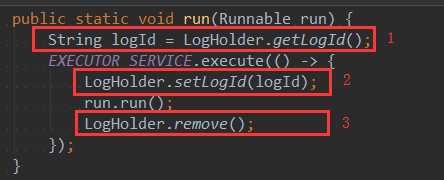在系统日志里出现了问题,“NtpClient 无法将手动对等机设置为用作时间源,因为“”上出现 DNS 解析错误”
Posted
tags:
篇首语:本文由小常识网(cha138.com)小编为大家整理,主要介绍了在系统日志里出现了问题,“NtpClient 无法将手动对等机设置为用作时间源,因为“”上出现 DNS 解析错误”相关的知识,希望对你有一定的参考价值。
NtpClient 无法将手动对等机设置为用作时间源,因为“”上出现 DNS 解析错误。NtpClient 将在 3473457 分钟后重试,此后重试间隔增加一倍。错误为: 请求的名称有效,但是找不到请求的类型的数据。 (0x80072AFC)
怎么解决啊
业务系统日志追踪
1、遇到的问题
开发中常常会打印业务日志,这些日志在排查问题或跟踪调用流程时非常有用,很多业务日志并没有考虑排查问题时的便利性,看似都记录了日志,一旦出现了线上问题,排查起来特别麻烦,很多时候又不方便让用户重现问题,造成解决问题周期长甚至是无法解决问题;如果日志记录的好,可以根据关键字搜索得出一条调用链日志,顺着这个日志链条就可以看出程序的执行全过程了。
2、如何记录日志
当然,应用、环境、ip、日志时间、日志级别、线程、输入输出参数…这些都是必要便于排错的日志信息就不多说了,重点说下如何记录跟踪一次调用流程的日志记录方法。
一种方法是:打印日志时候指明业务线,比如支付的流程里,所有步骤业务日志统一前缀 "支付流程:userId:",那么排查问题时候就可以根据关键字和userId来快速得到某个userid在支付流程里的所有轨迹。
但是这种方法有如下问题:
1、所有log统一前缀实行起来不太容易
2、同一个userid的log可能会非常多,并不能按request来归类
3、如果涉及到了公共方法调用(同时被多个业务流程调用),统一前缀很难实施
……
另一种方法是使用filter(filter使用传送门)给每个request生成唯一标识,在log里带上这个标识,将一个request的log通过唯一标识串成一串。

@WebFilter(filterName = "myFilter",urlPatterns = "/*") public class LogFilter implements Filter { @Override public void init(FilterConfig filterConfig) throws ServletException { } @Override public void doFilter(ServletRequest request, ServletResponse response, FilterChain chain) throws IOException, ServletException { String replace = UUID.randomUUID().toString().replace("-", ""); LogHolder.setLogId(replace); LogUtil.info("thread:"+Thread.currentThread().getName() + ",uuid : " + replace+",url:"+((HttpServletRequest) request).getRequestURI()); chain.doFilter(request, response); LogHolder.remove(); } @Override public void destroy() { } }
LogUtil:
@Slf4j public class LogUtil { public static void info(String content, Object... args) { log.info(String.format("LogFlowId: %s , %s", LogHolder.getLogId(), content), args); } public static void warn(String content, Object... args) { log.info(String.format("LogFlowId: %s , %s", LogHolder.getLogId(), content), args); } public static void error(String content, Exception ex) { log.error(String.format("LogFlowId: %s , %s", LogHolder.getLogId(), content), ex);
}
}
业务场景:

@RequestMapping("/log")
public void writelog() throws InterruptedException {
LogUtil.info("request begin");
test();
LogUtil.info("request end");
}
private void test() throws InterruptedException {
long l = System.currentTimeMillis();
Thread.sleep(1000);
LogUtil.info("操作耗时:" + (System.currentTimeMillis() - l) + " ms");
}
输出日志如下:

可以根据任意一步的logFlowId检索出整个request生命周期内的所有log。
对于一般的情况都可以实现,但是如果程序里使用了线程池会不会有线程复用的问题?来验证一下:
业务代码修改如下:

@RequestMapping("/log")
public void writelog() {
LogUtil.info("request begin");
ExecuterServiceUtil.run(() -> test());
LogUtil.info("request end");
}
public void test() {
long l = System.currentTimeMillis();
try {
Thread.sleep(1000);
} catch (InterruptedException e) {
e.printStackTrace();
}
LogUtil.info("操作耗时:" + (System.currentTimeMillis() - l) + " ms");
}

获取不到设置在ThreadLocal里的logFlowId了,这是因为线程池重新开辟了子线程,子线程不能访问主线程设置的logFlowId,可以使用 InheritableThreadLocal 来解决问题。
修改LogHolder为:

public class LogHolder { private LogHolder() { } public static final ThreadLocal<String> LOG_ID = new InheritableThreadLocal<>(); public static String getLogId() { return LOG_ID.get(); } public static void setLogId(String logId) { LOG_ID.set(logId); } public static void remove() { LOG_ID.remove(); } }
再次运行发现logFlowId有值了,但是却重复了,很明显是因为线程复用造成的问题。

最终解决办法:
1、获取主线程设置的logFlowId
2、执行前设置到子线程里
3、用完后清除子线程变量

输出日志如下所示:

如果是分布式应用跟踪,可以通过header透传方式,将logFlowId传入下一个应用里。
3、附录
以上是关于在系统日志里出现了问题,“NtpClient 无法将手动对等机设置为用作时间源,因为“”上出现 DNS 解析错误”的主要内容,如果未能解决你的问题,请参考以下文章
